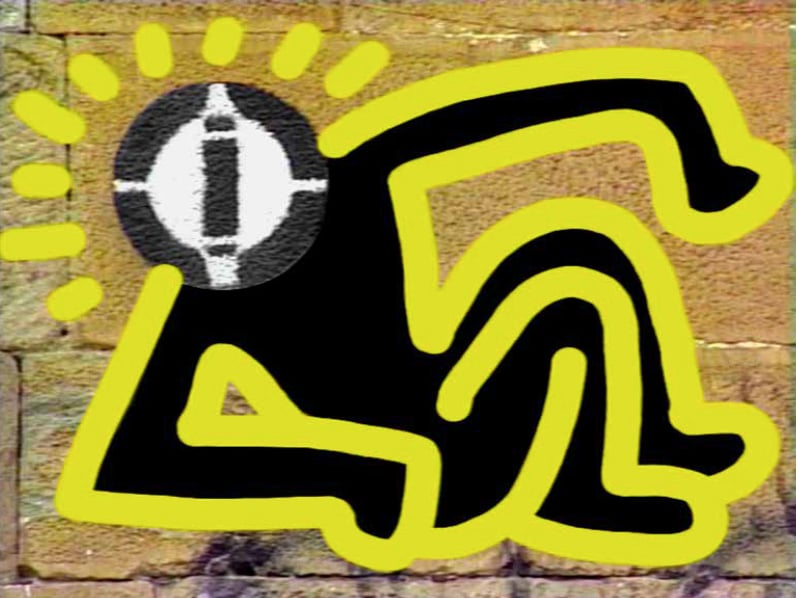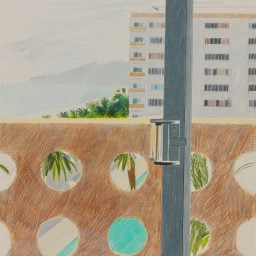David Hockney. Keith Haring. Larry Rivers. Jennifer Bartlett. These are just a few of the artists who experimented in the 1980s with the Quantel Paintbox, a forerunner to Photoshop.
Decades later, graffiti artist and photographer Adrian Wilson, himself an early Paintbox user, has tracked down the artists’ long-lost pieces made using the obscure computer graphics machine.
Now, Print reports, Wilson is showing a selection of 20 Paintbox artworks to the public for the very first time in “How Quantel’s Paintbox Changed Our World,” an exhibition from the Computer Arts Society at the Phoenix Cinema and Arts Centre, Leicester, U.K.
“At $250,000 to buy, or a minimum of $500 an hour to rent, Paintboxes were the Rolls-Royce of computer graphics, and hard to get access to,” Wilson told Artnet News. But when artists did get their hands on them, the results were extraordinary. “It was this amazing new thing that was revolutionary and exciting, and launched loads of careers, mine included.”
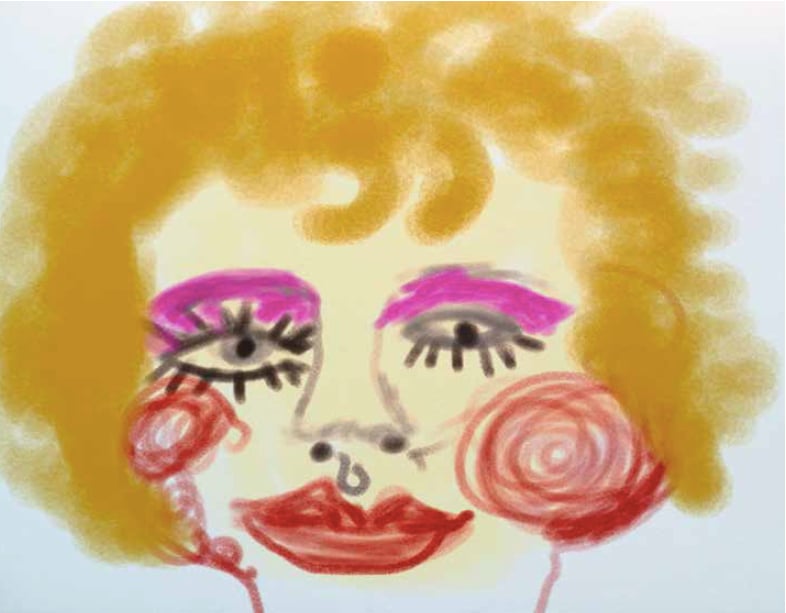
David Hockney, Ceila Birtwell (1984). ©David Hockney. Courtesy of the Adrian Wilson Paintbox Archive.
The Paintbox became a footnote in history after Quantel lost its patent infringement case against Adobe, and Photoshop became the industry standard. Though largely forgotten today, the Paintbox helped pioneer digital art and animation.
More than just a computer program, the Paintbox was a standalone machine, with a drawing surface and stylus pen coupled with a user-friendly interface designed to make artists forget they were using a computer to make art.
It was hugely influential in broadcast television. ABC bought nine Paintboxes ahead of the 1984 Summer Olympics. The first adopter was the Weather Channel, which upgraded from physical stickers representing sunshine and storms to weather maps with broadcast-quality graphics.
Paintbox was also integral to defining the visual look of MTV (also launched in 1981), and was used for music videos like “Money for Nothing” by Dire Straits and Boy George’s “You Are My Heroin,” directed by graphic designer Kiki Picasso.
And then there were the artists, who Quantel wooed from the start.
“They knew that as their end user, artists were crucial to their success,” Wilson said. “Quantel gave away literally millions of dollars worth of these things, because they wanted to encourage artists to use the Paintbox. And one arrived at my art college.”
That was in 1986 at the U.K.’s Blackpool School of Art, and it changed his life. Wilson believes he was the first photographer to digitally manipulate images.
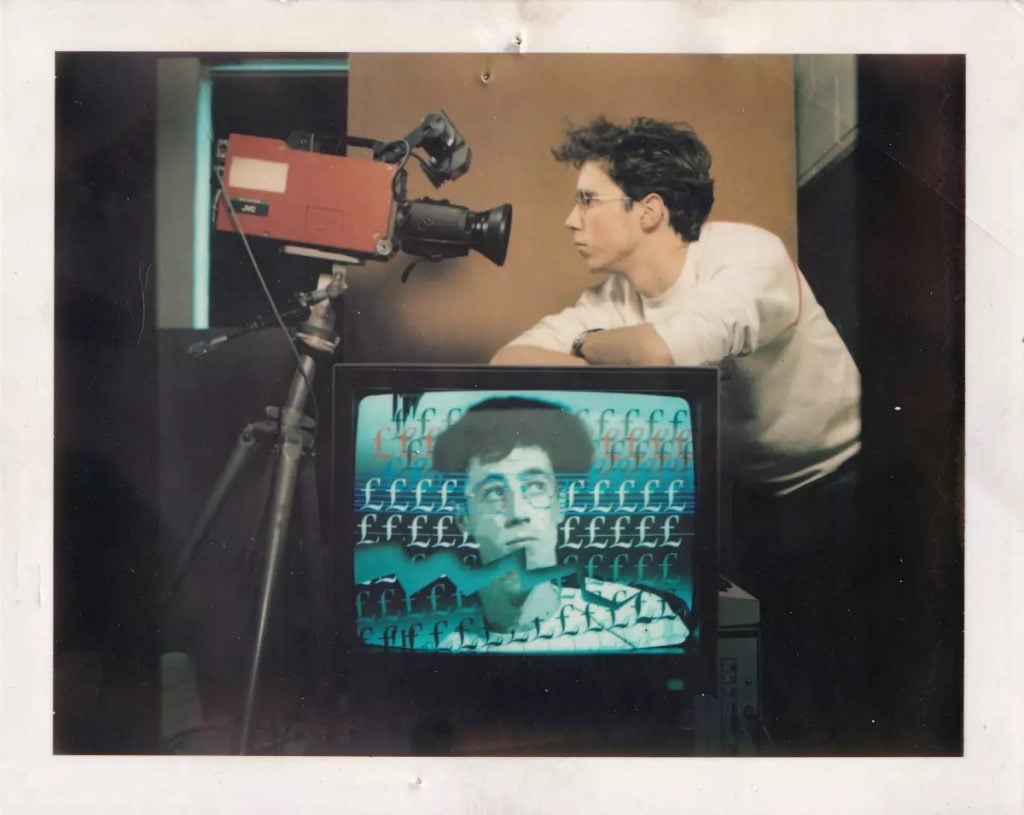
Ian T. Tilton took this photograph of Adrian Wilson with his work on a Quantel Paintbox workstation in 1987. Photo courtesy of the Adrian Wilson Paintbox Archive.
“You didn’t have to go in the dark room and cut out bits of paper or do it manually. You could have an idea and the Paintbox enabled that idea to become a reality,” he said. Though other photography students were deterred by the Paintbox’s low resolution, Wilson saw endless possibilities in the machine—and he wasn’t the only one.
In 1989, eight months before his death, Haring flew to Italy just to use the Paintbox after someone offered him access to the machine for three days.
“This Paintbox I was using in Rome could mix colors just like a palette, as well as pick up colors from the photos and duplicate them. It was just like mixing paint, except no mess. It’s only electrons and light,” Haring wrote in his journal at the time, marveling over how well his personal style adapted to this new medium. “It has totally revolutionized the notion of art and the image—why hasn’t anyone noticed?”
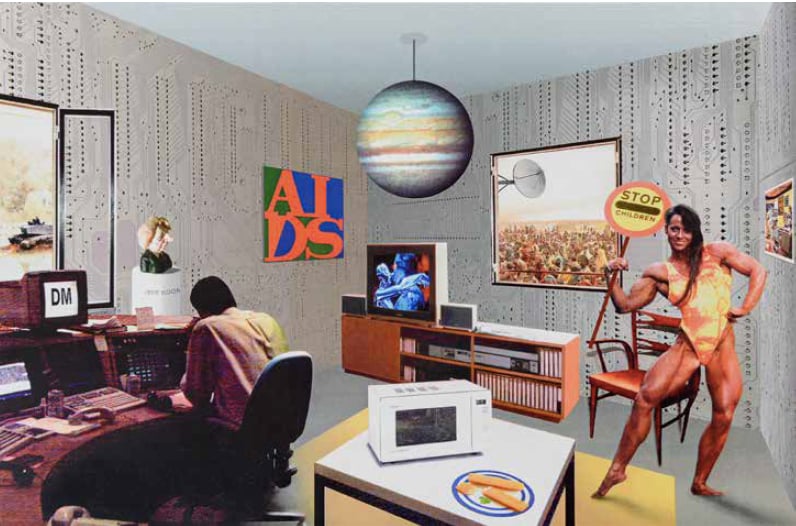
Richard Hamilton, Just What Makes Today’s Home So Different (1992). ©The Estate of Richard Hamilton. Courtesy of the Adrian Wilson Paintbox Archive.
Quantel invited six artists to try out the Paintbox for the BBC2 series Painting With Light in the mid ’80s. Richard Hamilton and Sidney Nolan were so impressed that they went on to buy their own personal Paintboxes.
Hockney spent eight hours working on the Paintbox at the Quantel headquarters with the BBC. He made what he called his “first colored glass drawings,” sparking a decades-long engagement in digital art that continues to this day with his iPad drawings and animated projected art show, on view through June 4 in London. It’s a much-need reminder of the massive impact that the Paintbox had on visual culture, paving the way for digital art as we know it today.
The new Quantel exhibition includes a Hockney portrait of British textile designer Celia Birtwell, one of the artist’s recurring muses. The image never made it into the BBC broadcast. Wilson got his hands on it when someone came to him with a box of slides and other Quantel ephemera that had been saved from the trash.
In February, the company that bought the Quantel brand, Black Dragon, shuttered the Newbury factory where the Paintbox—as well as parts for the Spitfire fighter aircraft—was once produced. (The company would have turned 50 this year.)
“A lot of things were just thrown out,” Wilson said. “But this person kept them for maybe 20 years. They came to me and said, ‘Hey, I’ve got these boxes of slides that say Quantel.’ They didn’t even have a clue what they were.”
Quickly, Wilson realized the slides had been made during the production of Painting With Light using a film recorder, an old graphical output device that could transfer digital images to photographic film. When he went to Hockney and the other artists and their estates, even they didn’t have copies for their own archives.
For decades, even Wilson had forgotten his formative years on the Paintbox. But in 2021, as the world went crazy for NFTs, a friend mentioned that the latest developments in digital art had generated some interest in the origins of the medium. Wilson, who lives in New Jersey, remembered that all his Quantel work was packed away, with boxes of Kodachrome slides and Cibachrome prints stored at his mom’s house in the U.K.
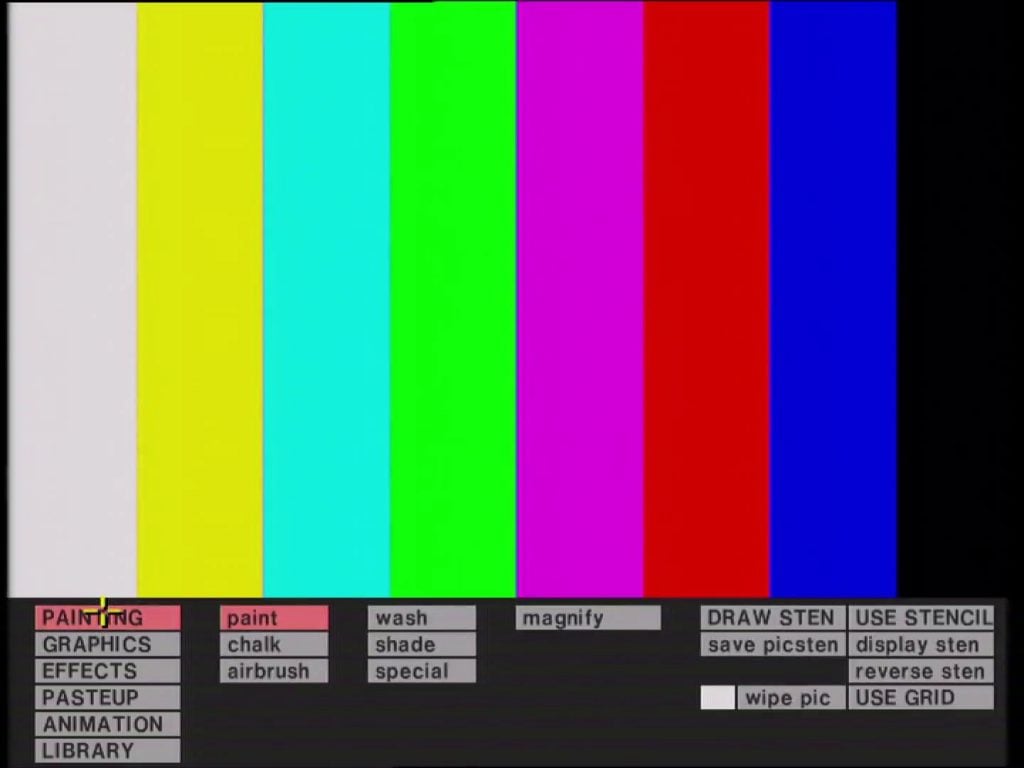
Part of the Quantel Paintbox interface. Screenshot by Adrian Wilson.
Since then, the Paintbox has become a renewed passion for Wilson, who said the current exhibition represents only a fraction of what he’s tracked down, extracting old image floppy discs and rescuing files from obscurity. (Artists not featured in the show who also used the Paintbox include Nam June Paik and Andreas Gursky, who is known to have continued working on it until at least 2008.)
“Everyone involved just loved Quantel and the Paintbox, so that’s why they’ve given me so much stuff,” Wilson said. “All those foundations and artists have given their approval.”
Rediscovering the Paintbox has also inspired him to co-produce a documentary film about the pioneering technology that gave birth to digital art. Wilson’s old friend Trudy Bellinger, who commissioned many Paintbox music videos during her time as creative director at EMI Records, is directing.
The film will offer a history of the rise and fall of the Paintbox, from its quiet dominance on the airwaves to its ultimate defeat at the hands of Adobe. There is historic footage of Queen Elizabeth II watching an artist create her portrait on a Paintbox, and interviews with Quantel developers, as well as artists and designers who made work with the machine.
“We’ve got all this footage of artists using it for the first time and being completely bowled over,” Bellinger told Artnet News.
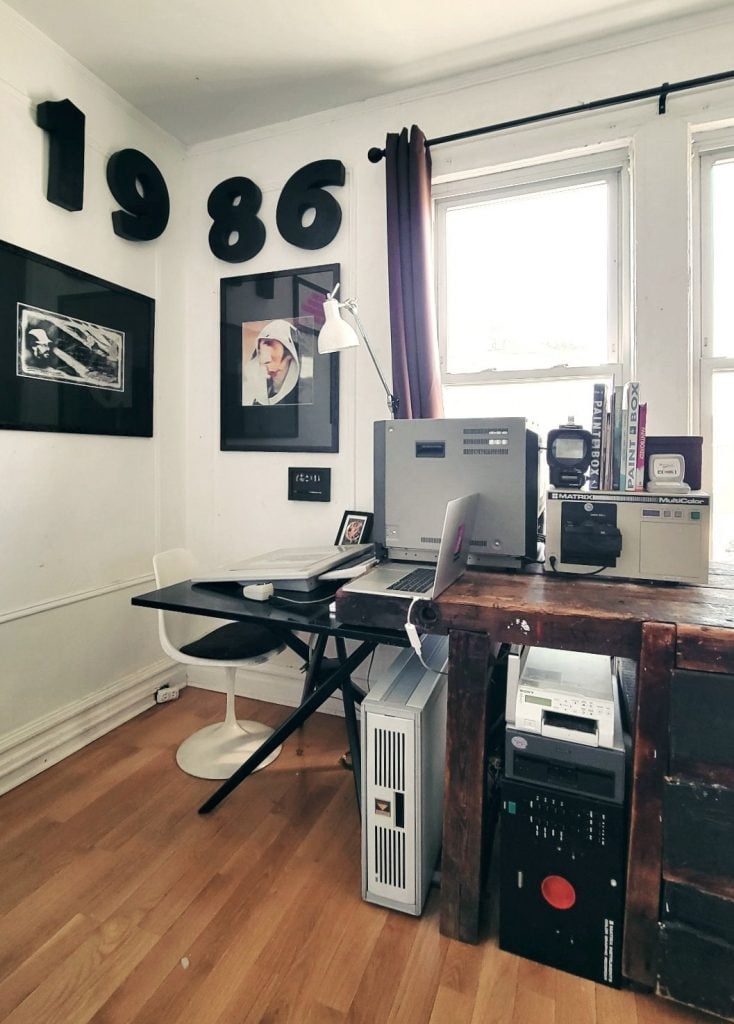
Adrian Wilson’s working Quantel Paintbox at his New Jersey studio. Photo by Adrian Wilson.
Wilson even tracked down a second-generation version of the machine on eBay for $1,500. He enlisted Mark Nias, a vintage computer expert in the U.K., to restore it to working order, and will use it to create all the graphics for the film.
In the meantime, Wilson has an open invitation to any Paintbox veterans to come try it out—and he’d also love to get a contemporary NFT artist to mint new work made using the more than 40-year-old technology.
“Beeple on this would be so amazing,” he said. “Following in the footsteps of Haring and Hockney’s first digital art!”
“How Quantel’s Paintbox Changed Our World” is on view from the Computer Arts Society at Phoenix Cinema and Arts Centre, 4 Midland Street, Leicester, U.K., May 9–June 30, 2023. It will travel to the British Computer Society Moorgate, 25 Copthall Avenue, London.
